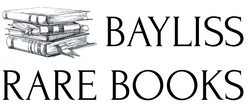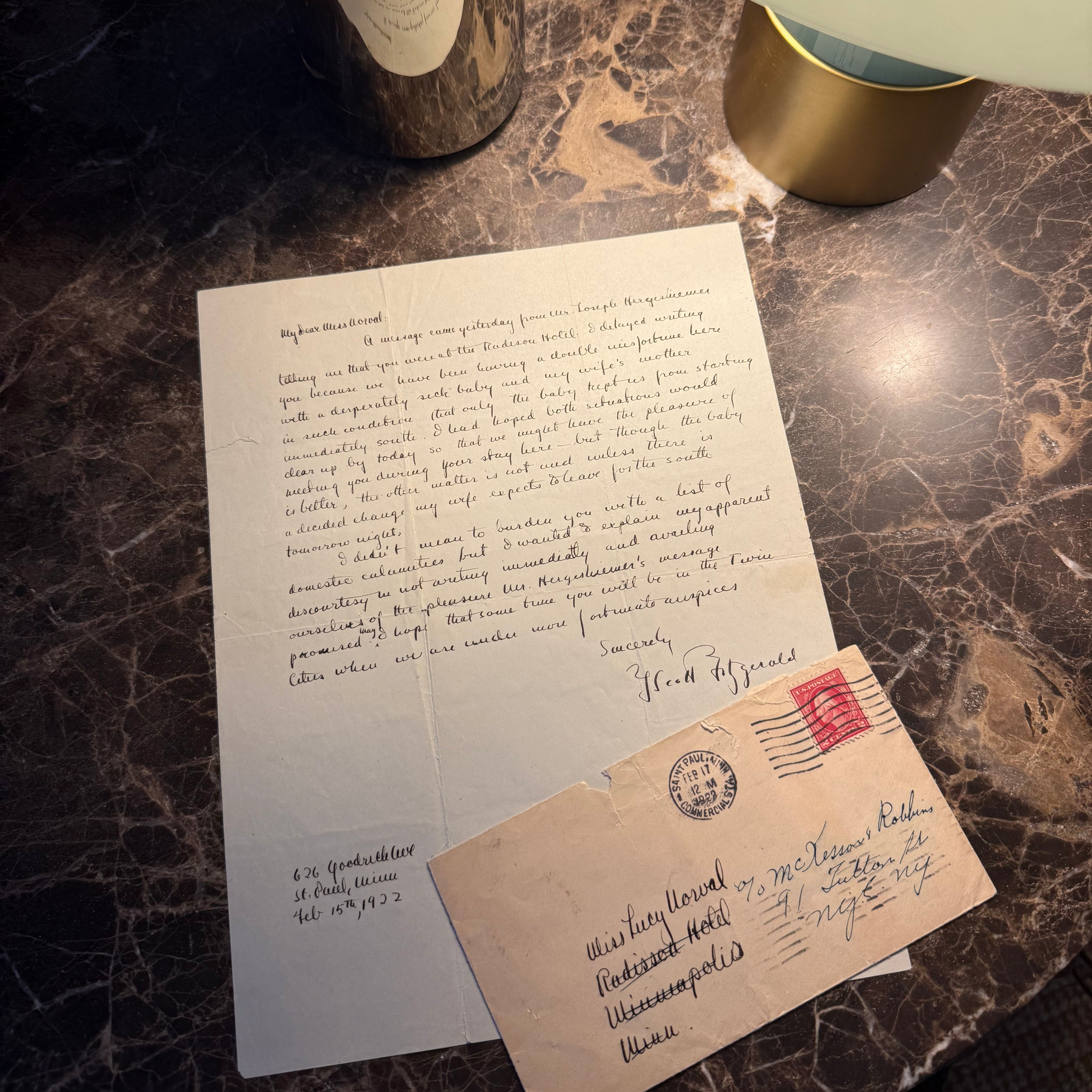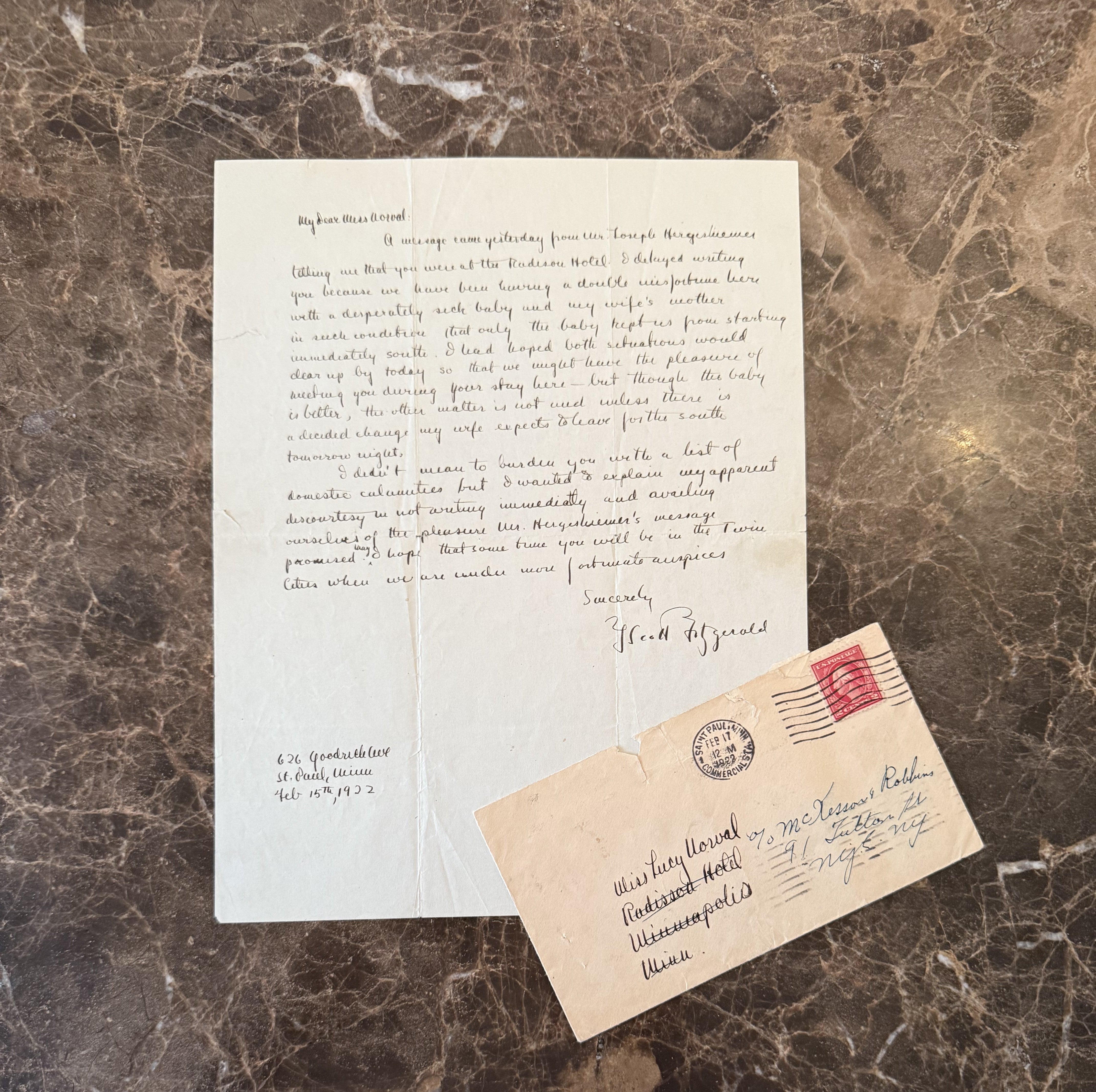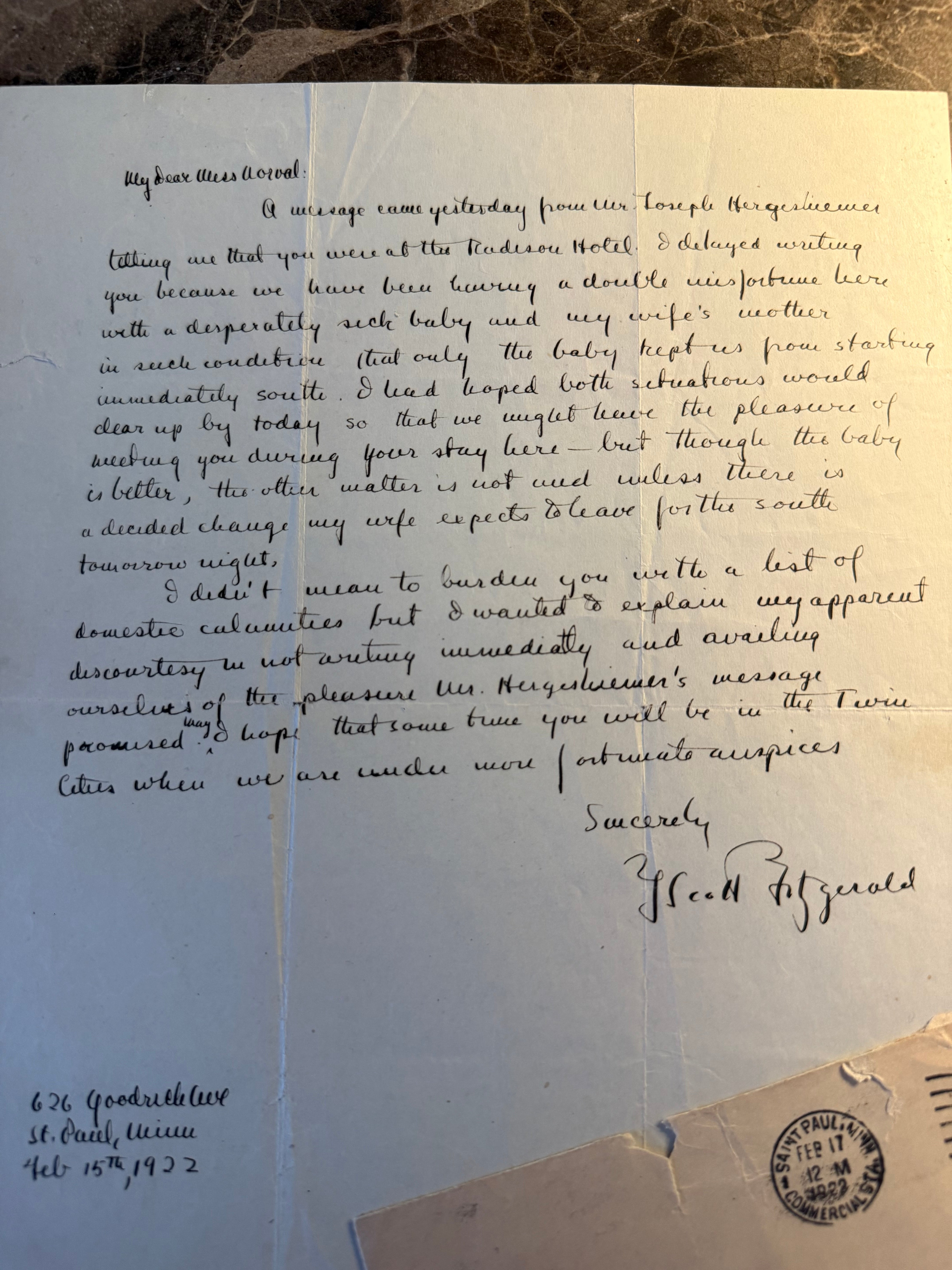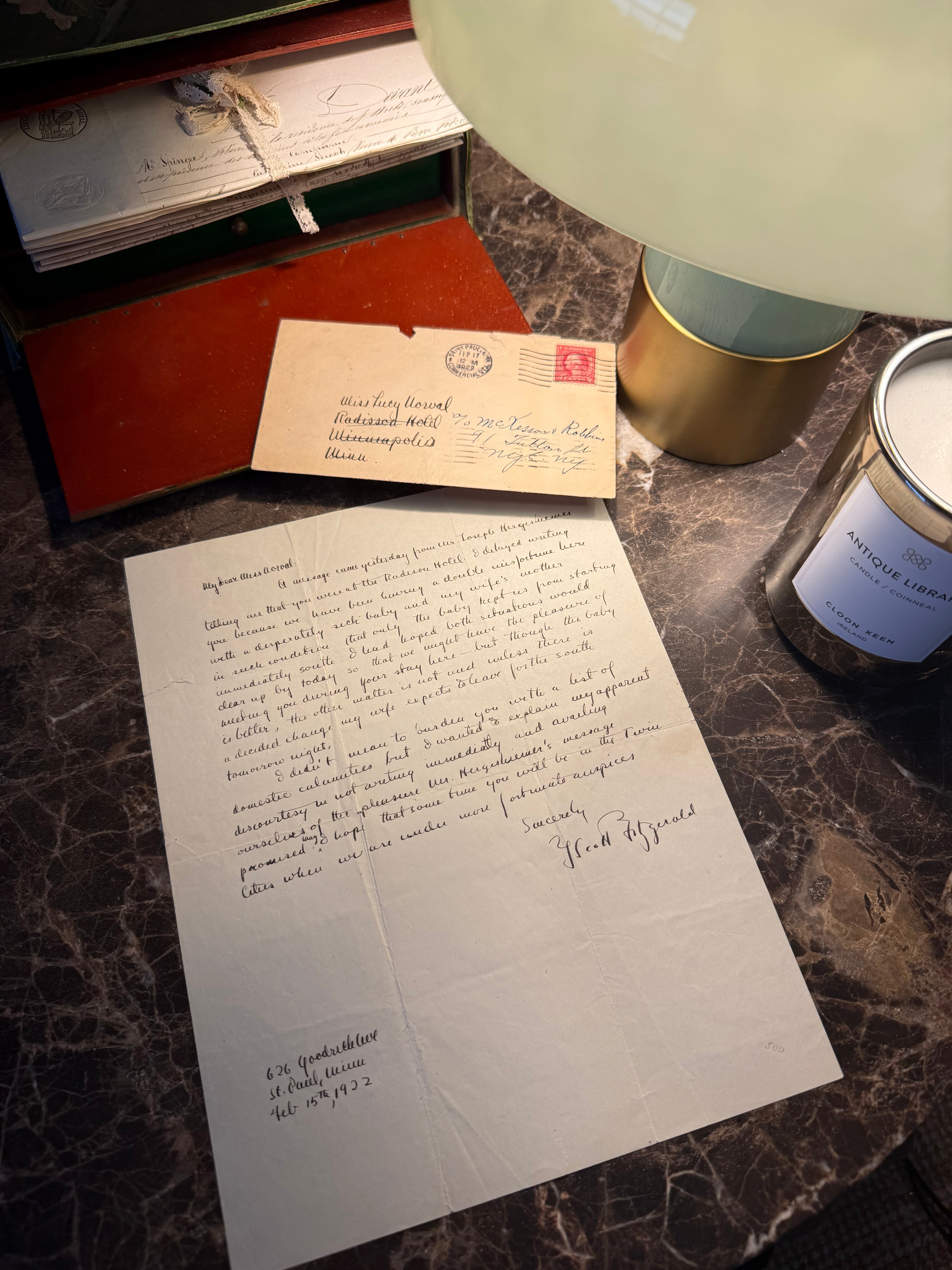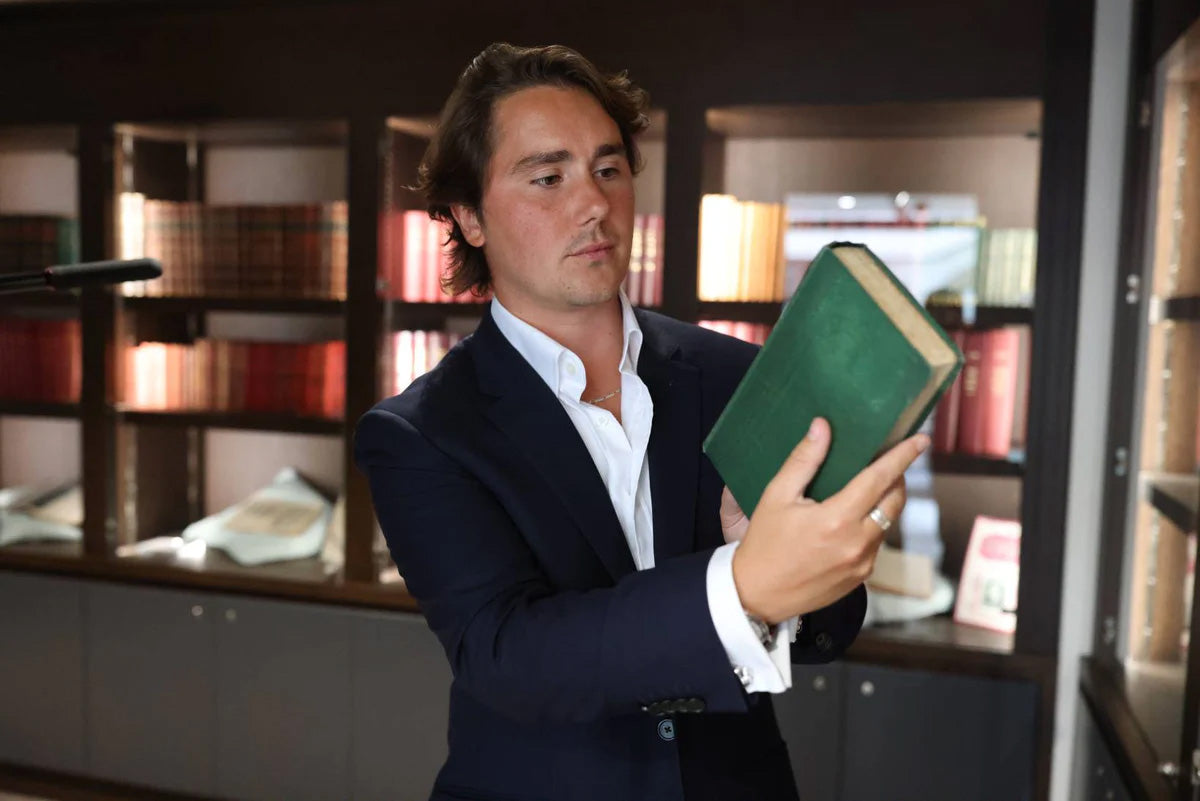Signed F. Scott Fitzgerald Letter | 1922, handwritten intimate letter on home life with Zelda and “domestic calamities”
Couldn't load pickup availability
Written in the bleak Minnesota winter of 1922, this letter captures Fitzgerald on the brink of literary immortality and personal unravelling. Newly a father and exhausted by financial and creative pressure, he was working feverishly to finish The Beautiful and Damned while Zelda, restless and unwell, dreamed of escape. The letter’s weary tone contrasts sharply with the glittering image of the Fitzgerald's that would soon define the Jazz Age. Within months, they would leave the Midwest behind for New York, parties, and notoriety.
This is Fitzgerald before Gatsby and before the myth, a young man of immense talent balancing ambition and anxiety, love and chaos, already aware, though perhaps not yet resigned, that the price of brilliance would be everything else.
A rare and intimate autograph letter signed by F. Scott Fitzgerald, written from St. Paul, Minnesota, on February 15, 1922, just two weeks before the publication of The Beautiful and Damned. Addressed to Lucy Norvell, a New York socialite introduced through the novelist Joseph Hergesheimer, the letter offers a candid glimpse into Fitzgerald’s domestic life at the height of his early fame.
Fitzgerald writes to apologise for missing a planned meeting, explaining that “a double misfortune” has struck the household: “a desperately sick baby and my wife’s mother in such condition that only the baby kept us from starting immediately south.” It is a strikingly human note from an author already famous for chronicling the glamour of youth, success, and excess. Here he is instead as a young husband and father, weary and surrounded by illness, writing from a small rented house in St. Paul.
At just twenty-five, Fitzgerald was living at 626 Goodrich Avenue with Zelda and their infant daughter, Frances Scott “Scottie” Fitzgerald, born the previous autumn. Zelda was struggling with the monotony of domestic life and the isolation of a harsh Minnesota winter. Fitzgerald was under growing financial strain. Although This Side of Paradise (1920) had made him a star, the couple were living beyond their means, and The Beautiful and Damned was written under pressure to fund their increasingly extravagant habits. He was also producing a steady stream of short stories for The Saturday Evening Post to pay the bills, describing himself as “a literary prostitute.”
The illnesses described in this letter likely refer to an influenza outbreak that winter, which left both Zelda’s mother and baby Scottie seriously unwell. The letter’s tone, apologetic and tender, captures a rare moment of vulnerability from a writer who usually cloaked his chaos in brilliance. Two weeks later, The Beautiful and Damned would appear in print, cementing Fitzgerald’s reputation as the chronicler of his generation and drawing him further into the orbit of fame that would ultimately consume him.
Written entirely in Fitzgerald’s hand and signed in full, this is an outstanding example of his correspondence. Most surviving Fitzgerald letters are typewritten. Few are so personal, and fewer still written so close to a pivotal moment in his life and career. This example retains its original mailing envelope, also addressed in Fitzgerald’s hand, offering a further touch of authenticity and intimacy. As you might imagine, Fitzgerald correspondence is among the most sought after of any twentieth-century author, prized for its rarity, its candour, and its unfiltered voice.
Provenance:
From the collection of Rolling Stones drummer Charlie Watts, acquired from Bauman Rare Books and sold at Christie’s in 2023 as part of his Literature and Jazz estate sale.
